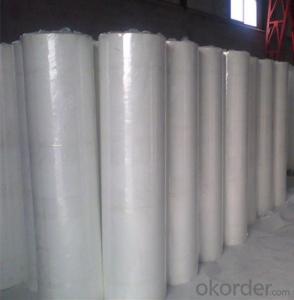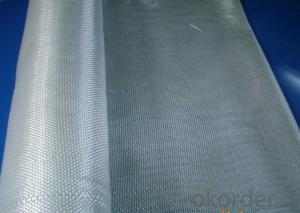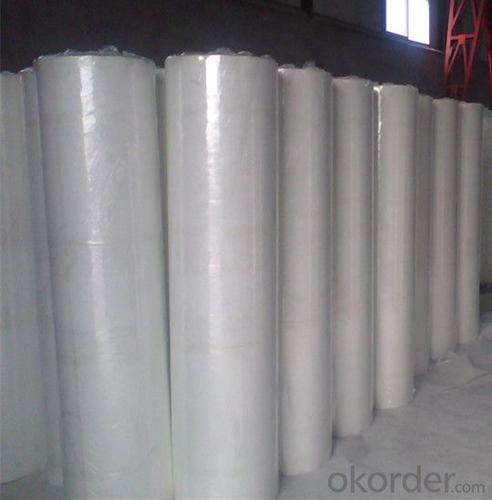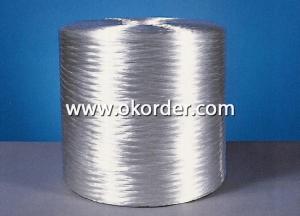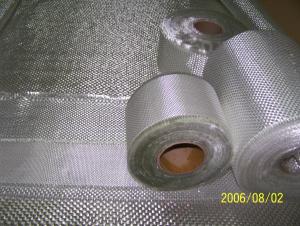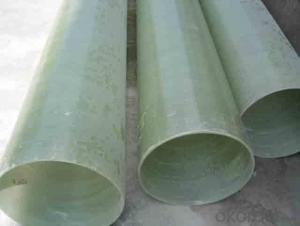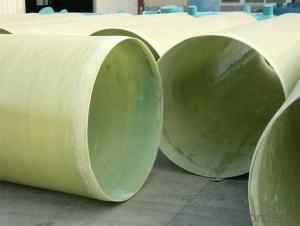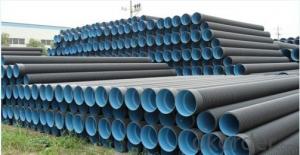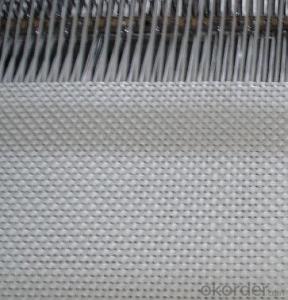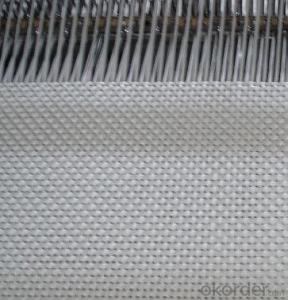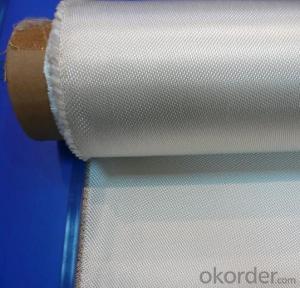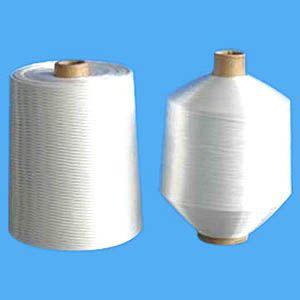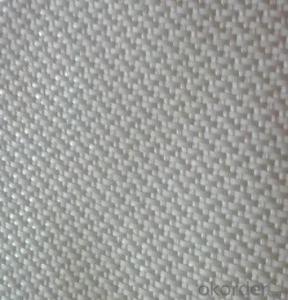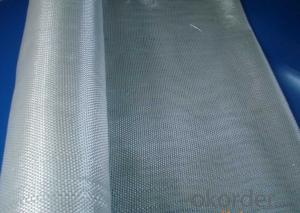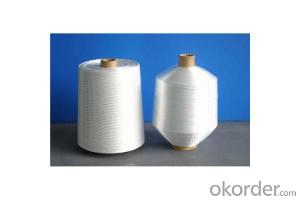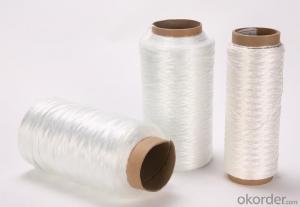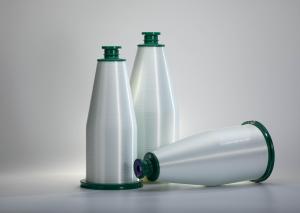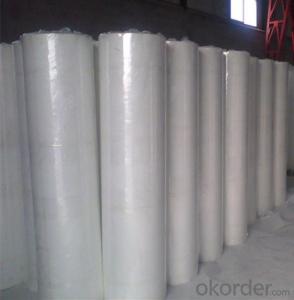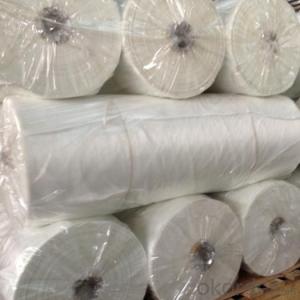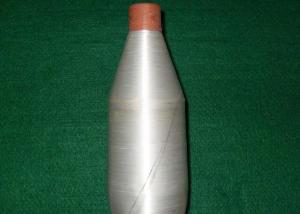Fiberglass Yarn - Fiberglass Fabric of Good Stable Structure ISO9001
- Loading Port:
- Shanghai
- Payment Terms:
- TT OR LC
- Min Order Qty:
- 500 m²
- Supply Capability:
- 50000 m²/month
OKorder Service Pledge
OKorder Financial Service
You Might Also Like
Fiberglass Fabric of Good Stable Structure ISO9001
Fiberglass Fabric Introduction:
Fiberglass fabric is weaved by high quality fiberglass,as a kind of engineering material,which is
many excellent characteristics:
flame-resisting,corrosion resistant,high strength,heat resistance.stable structure,good chemical resistance,durability.
Fiberglass Fabric Features:
1. External thermo insulating composite System (ETICS) & External insulating finish system (EIFS)
2. External and internal plaster reinforcement Fiberglass Mesh;
3. Electrical heating mats Fiberglass Mesh
4. Marble slab reinforcement / Mosaic carrier Fiberglass Mesh;
5. Asphalt reinforcement (roof water-proof)
6. Reinforced lightweight construction boards Fiberglass Mesh.
Fiberglass Fabric Specification:
mark | Fiber consistency(ends/ cm) |
Area weight (g/ m2) |
Thick-ness (mm) |
Width (cm) |
Length (mm) | Breaking strength(N)≥ |
weave | |||
Warp direction | Weft direction | Warp direction | Weft direction | |||||||
EW200 | 16 | 12 | 200±20 | 0.2 | 90-130 | 300-1200 | 980 | 980 | ||
EW210 | 16 | 12 | 200±20 | 0.21 | 90-130 | 300-1200 | 1080 | 1080 | Twill weave | |
Plain weave | ||||||||||
EWR360 | 3.2 | 1.8 | 354±18 | 0.35 | 50-300 | 100 | 2000 | 2000 | ||
EW280 | 16 | 10 | 280±28 | 0.26 | 90-130 | 300-1200 | 1800 | 1800 | ||
EW300 | 14 | 10 | 320±32 | 0.3 | 90-130 | 300-1200 | 1500 | 1500 | ||
EW430 | 20 | 12 | 420±42 | 0.43 | 90-130 | 300-1200 | 2000 | 2000 | Broken twill | |
EWR136 | 10 | 10 | 136±13 | 0.136 | 100 | 200 | 850 | 850 |
Plain weave | |
EWR200 | 8 | 7 | 200±20 | 0.21 | 100 | 200 | 1200 | 1200 | ||
EWR400 | 3.6 | 3.2 | 400±30 | 0.4 | 100 | 50-100 | 2500 | 2500 | ||
EWR600 | 2.6 | 2.5 | 600±50 | 0.6 | 100 | 40KG | 4000 | 4000 | ||
EWR580 | 2.5 | 2.3 | 576±29 | 0.58 | 100 | 40KG | 3850 | 3850 | ||
EWR800 | 1.8 | 1.8 | 800±60 | 0.8 | 100 | 40KG | 4600 | 4600 | ||
Product Show
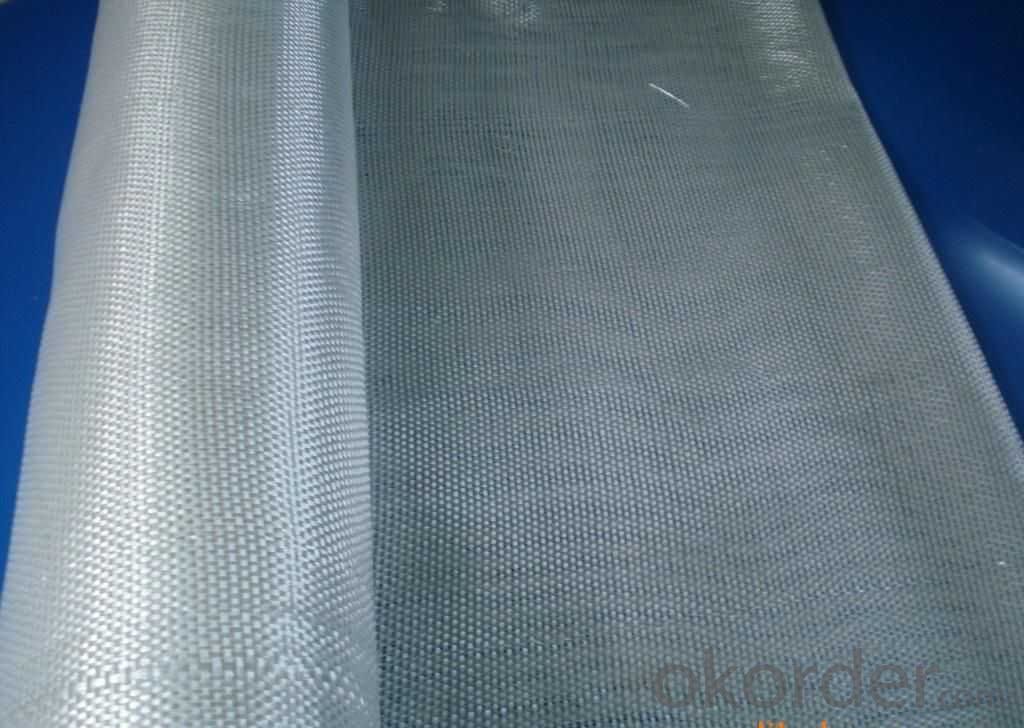
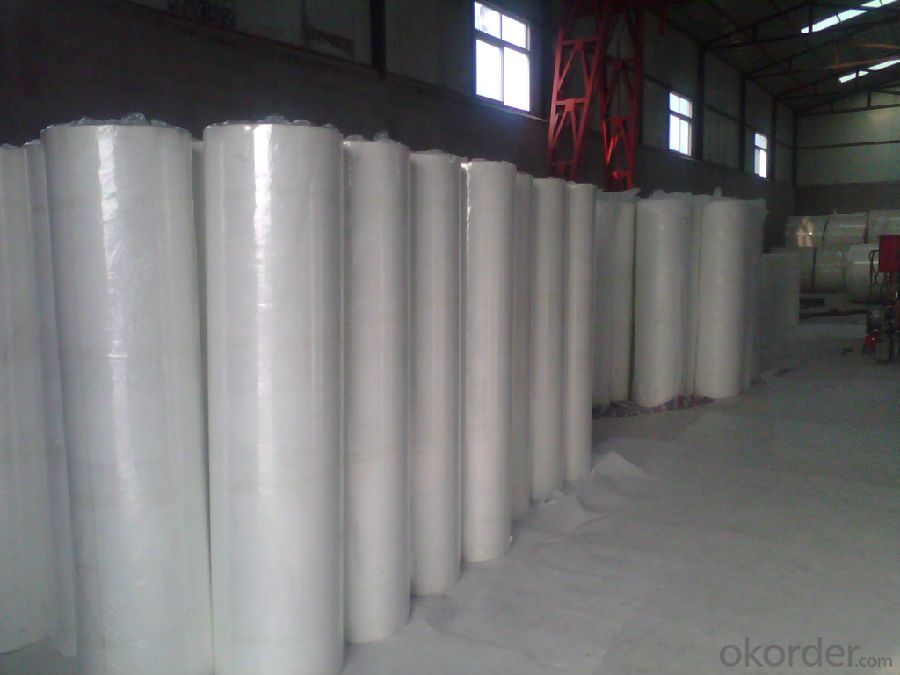
Fiberglass Fabric Usage:
E-glass woven roving is a schistose double faces reinforcement fabric that is weaved into from roving in directly.
E-glass fiber fabric (thin fabrics with thickness from 0.025 to 0.09mm) is suitable for electrical isolation mica product, wax cloth as the reinforcement materials.
E-glass woven roving applys to all kinds of polyester reinforcement system, (such as unsaturated polyester resin, vinylite,epoxy resin and phenolic resin.
FAQ
1.Package of Fiberglass Fabric?
Fiberglass fabric is wound on a paper tube with inner diameters of 50. 8, 76 or 152mm. Each roll is wrapped in a plastic bag, then to be packed in a carton box. The rolls are to be horizontally placed.
Width (cm): 90, 100, 127
Length (m): 100, 200, 300, 400
2.Storage of Fiberglass Fabric?
Store rolls in a cool, dry location
Protect rolls from weather and other damage.
3.If sample available if needed?
We aim to offer our customer best Products&Service,samples are allowed if necessary.
- Q: Is fiberglass yarn resistant to compression or crushing?
- Yes, fiberglass yarn is typically resistant to compression or crushing due to its high tensile strength and rigid nature.
- Q: What are the different treatments available for fiberglass yarn?
- Depending on the specific application and desired properties, there are various treatments available for fiberglass yarn. Some commonly used treatments include: 1. Sizing: To improve the handling properties and compatibility with other materials, fiberglass yarn undergoes sizing treatment. This treatment enhances the yarn's strength, lubricity, and adhesion to resins or other matrix materials. 2. Coating: By applying a protective layer, the fiberglass yarn can be coated to enhance its resistance to abrasion, chemicals, or UV degradation. Coatings can also provide additional fire resistance or electrical insulation properties. 3. Heat treatment: The physical properties of fiberglass yarn can be modified by subjecting it to high temperatures through heat treatment. This process increases the yarn's strength, reduces shrinkage, and enhances dimensional stability. 4. Surface treatment: Altering the surface characteristics of fiberglass yarn improves its adhesion to other materials. Surface treatment can involve chemical processes or physical methods like plasma treatment. 5. Lubrication: Fiberglass yarn can be treated with lubricants to reduce friction during processing and improve flexibility. This treatment makes the yarn easier to handle and prevents breakages during weaving or fabrication processes. 6. Dyeing: For aesthetic purposes or color-coding in applications like composites or textiles, fiberglass yarn can be dyed to achieve specific colors. The choice of fiberglass yarn treatment depends on the intended use and desired properties. These treatments enhance the yarn's strength, durability, chemical resistance, fire resistance, and other characteristics to meet the specific requirements of different industries and applications.
- Q: Can fiberglass yarn be used in insulation blankets?
- Yes, fiberglass yarn can be used in insulation blankets. Fiberglass yarn is often used in the production of insulation blankets due to its excellent thermal insulation properties and resistance to high temperatures. It is lightweight, durable, and can effectively trap air pockets, which helps to reduce heat transfer. Additionally, fiberglass yarn is also resistant to moisture, chemicals, and fire, making it an ideal choice for insulation applications.
- Q: What are the different sizes available for fiberglass yarn?
- Various sizes of fiberglass yarn are available to meet different applications and requirements. The most commonly found sizes for fiberglass yarn include 75 tex, 150 tex, 225 tex, 450 tex, and 900 tex. These sizes indicate the linear density of the yarn, measured in grams per 1000 meters. The thickness and strength of the yarn are determined by its tex size, with higher tex sizes indicating thicker and stronger yarn. When selecting the suitable size of fiberglass yarn, it is crucial to consider the specific application and desired properties. For lightweight applications like insulation or reinforcement in composites, smaller tex sizes such as 75 tex are often used. Conversely, heavy-duty applications that demand high strength, like construction materials or industrial fabrics, require larger tex sizes such as 900 tex. Apart from the tex size, the yarn's diameter and the number of filaments it possesses can also vary. Fiberglass yarn can be composed of a single filament or multiple filaments twisted together. The number of filaments impacts the overall strength and durability of the yarn. In conclusion, the availability of diverse sizes for fiberglass yarn permits versatility and customization, ensuring that there is an appropriate choice for various applications and industries.
- Q: Can fiberglass yarn be used for making insulation tape?
- Yes, fiberglass yarn can be used for making insulation tape. Fiberglass is a durable and heat-resistant material that is commonly used for insulation purposes. It has excellent electrical insulation properties and can withstand high temperatures. This makes it an ideal choice for insulation tape, which is used to insulate and protect electrical wires and cables. Fiberglass yarn can be woven or braided into a tape form, providing a strong and flexible insulation solution. Additionally, fiberglass is also resistant to chemicals, moisture, and UV radiation, further enhancing its suitability for insulation tape applications.
- Q: Is fiberglass yarn suitable for making outdoor furniture covers?
- Yes, fiberglass yarn is suitable for making outdoor furniture covers. Fiberglass is a durable and weather-resistant material that can withstand various outdoor conditions, such as UV exposure, moisture, and temperature fluctuations. It is also resistant to mold, mildew, and insects, making it an excellent choice for protecting outdoor furniture from the elements. Additionally, fiberglass yarn can be woven into strong and sturdy fabrics that offer reliable durability and longevity for outdoor furniture covers.
- Q: Is fiberglass yarn suitable for use in automotive body panels?
- Yes, fiberglass yarn is suitable for use in automotive body panels. Fiberglass yarn is known for its strength, durability, and resistance to corrosion, making it an ideal material for automotive applications. It offers excellent impact resistance, which is crucial for body panels that need to withstand potential collisions. Additionally, fiberglass yarn is lightweight, which helps improve fuel efficiency and overall vehicle performance. Its flexibility allows for complex shapes and designs, providing automotive manufacturers with more design options. Moreover, fiberglass yarn is cost-effective compared to other materials, making it a popular choice for automotive body panels. Overall, fiberglass yarn is a suitable and widely used material in the automotive industry for its strength, durability, flexibility, and cost-effectiveness.
- Q: Can fiberglass yarn be used for making swimwear?
- Yes, fiberglass yarn can be used for making swimwear. It is often used in combination with other materials to create swimwear that is durable, lightweight, and has enhanced performance properties such as resistance to chlorine and UV rays.
- Q: How does the abrasion resistance of fiberglass yarn compare to other materials?
- The abrasion resistance of fiberglass yarn is generally considered to be superior to many other materials. It is highly durable and can withstand heavy wear and tear, making it an excellent choice for applications that require resistance to abrasion, such as industrial textiles or reinforcement in composites.
- Q: Can fiberglass yarn be used for making clothing?
- Yes, fiberglass yarn can be used for making clothing. While it is not a common material for clothing, fiberglass yarn offers unique properties that make it suitable for certain applications. Fiberglass is known for its strength, durability, and resistance to heat, chemicals, and fire. These properties make it ideal for protective clothing used in industries such as firefighting or welding, where safety is a primary concern. Additionally, fiberglass yarn can be blended with other fabrics to enhance their strength and durability, making it suitable for use in sportswear or outdoor apparel. However, it is important to note that fiberglass yarn can be abrasive and uncomfortable against the skin, so it is typically used as a reinforcing material rather than a primary fabric.
Send your message to us
Fiberglass Yarn - Fiberglass Fabric of Good Stable Structure ISO9001
- Loading Port:
- Shanghai
- Payment Terms:
- TT OR LC
- Min Order Qty:
- 500 m²
- Supply Capability:
- 50000 m²/month
OKorder Service Pledge
OKorder Financial Service
Similar products
Hot products
Hot Searches
Related keywords
